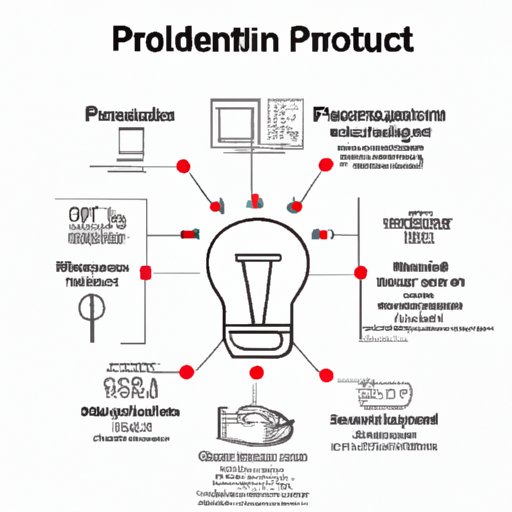Introduction
Patents are a form of intellectual property protection that allow inventors to secure exclusive rights to their inventions. When a product is patented, the inventor is granted a legal monopoly that prevents others from copying, making, or selling the invention without permission. In this article, we’ll explore the steps involved in patenting a product, the different types of patents available, the pros and cons of patenting a product, the process of filing a patent application, and the benefits of obtaining a patent.
Different Types of Patents
There are four main types of patents that can be obtained in the United States: utility patents, design patents, plant patents, and provisional patents. Each type of patent provides different levels of protection for different types of inventions.
Utility Patents
Utility patents are the most common and provide protection for inventions that are novel, useful, and non-obvious. This type of patent protects the function of an invention, such as a new machine or process. Utility patents last for 20 years from the date the patent application is filed.
Design Patents
Design patents protect the ornamental design of an object. This includes the shape, color, and any other visual elements of the object. Design patents last for 14 years from the date the patent is issued.
Plant Patents
Plant patents are used to protect new varieties of plants that have been asexually reproduced. Plant patents last for 20 years from the date the patent is filed.
How to Choose the Right Type of Patent
When deciding which type of patent to pursue, it’s important to consider the scope of protection you need and the type of invention you’re trying to protect. It may also be beneficial to consult with a patent attorney or other qualified professional to ensure that you choose the best type of patent for your invention.
Pros and Cons of Patenting a Product
Patenting a product can be a lengthy and costly process, so it’s important to weigh the pros and cons before beginning the process. On the positive side, patenting a product allows you to protect your intellectual property and gives you exclusive rights to produce and sell your invention. It also allows you to prevent others from copying or selling your invention without your permission. On the downside, the patent application process can be expensive and time consuming, and there is no guarantee that your patent will be approved. Additionally, once a patent is obtained, you must be diligent in enforcing it.

Process of Filing a Patent Application
Once you’ve decided to pursue a patent, it’s important to understand the requirements and steps involved in filing a patent application. The process can be broken down into four main steps: understanding the requirements, gathering the necessary information, preparing the application, and submitting the application.
Understanding the Requirements
The first step in filing a patent application is to understand the requirements of the USPTO (United States Patent and Trademark Office). You should familiarize yourself with the different types of patents and the requirements for each type. You should also review the rules and regulations for filing a patent application.
Gathering the Necessary Information
Once you understand the requirements, the next step is to gather the necessary information. This includes identifying the invention, researching existing patents, and collecting drawings and diagrams of the invention. It’s also important to contact a patent attorney or other qualified professional to help you through the process.
Preparing the Application
After the necessary information has been gathered, the next step is to prepare the patent application. This includes writing a detailed description of the invention, including drawings and diagrams, and properly formatting the application according to the USPTO’s guidelines. This is where the assistance of a patent attorney or other qualified professional can be invaluable.
Submitting the Application
Once the application is prepared, the final step is to submit it to the USPTO. Before submitting the application, it’s important to double check that all the necessary information is included and that it is properly formatted. Once the application is submitted, the USPTO will review it and make a decision.

Benefits of Obtaining a Patent
If your patent application is successful, you will receive a patent that grants you exclusive rights to your invention. This means that you will have the legal right to prevent others from copying, making, using, or selling your invention without your permission. Additionally, having a patent can give you leverage when negotiating with potential investors or partners and can help you protect your intellectual property.
Conclusion
Patenting a product is a complex process, but it can be an effective way to protect your intellectual property. Understanding the different types of patents, the pros and cons of patenting a product, and the process of filing a patent application will help you decide if patenting a product is right for you. Additionally, having a patent can bring many benefits, including the ability to prevent others from copying or selling your invention without your permission.


